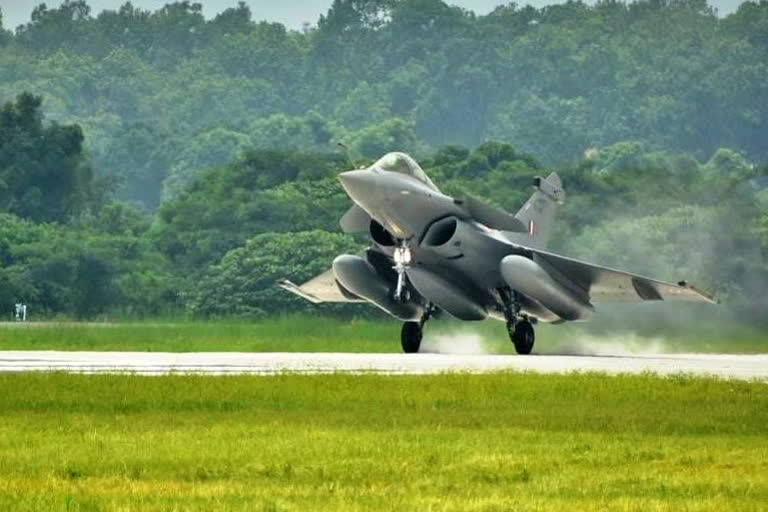New Delhi: India has forward-deployed its Rafale fighter aircraft at the Kushok Bakula Rimpochee Airport at Leh in Ladakh after a People’s Liberation Army Air Force (PLAAF) fighter aircraft buzzed very close to the disputed Line of Actual Control (LAC) in eastern Ladakh more than two weeks ago, a source has told ETV Bharat.
As soon as the PLAAF aircraft was detected by Indian radars and also spotted by soldiers deployed on the LAC at about 4am, an unspecified number of Rafale fighters were scrambled at the Ambala airbase as per the standard operating procedures, about 400 km from Leh.
While the Chinese motive is not yet clear, it is suspected the PLAAF wanted to check the Indian Air Force’s (IAF) response time to a possible border transgression. The ‘buzz’ took place at dawn at about 4am and very soon the Rafale fighters took off from Ambala and made it to near the area of the ‘incident’ in good time before daybreak in an apt demonstration of night-flying prowess.
Totaling 36, India has two squadrons of the cutting-edge French-origin Rafale fighter. While one squadron is based in Ambala, the other is based at Hashimara near Siliguri in West Bengal. According to mutually-agreed upon laid down rules between India and China, fighter aircraft and armed helicopters have to keep a distance of 10 km away from both sides of the border, while utility helicopters are allowed to operate till about 1 km to the border.
Also read: Chinese fighter jet flew close to friction point on LAC in East Ladakh last month
But the problem lies in the fact that across eastern Ladakh as in many stretches of the LAC, there is no clear demarcation and agreed-upon border line with both sides having their own perception about where the border lies. According to the source, the PLAAF fighter would have been part of the notable Chinese buildup across the LAC where the PLA is undertaking a massive military exercise.
It was precisely from a similar exercise in May-June 2020 that the PLA diverted about two division-strong forces, numbering about 30,000, to the LAC just across eastern Ladakh, which sparked off tension between the two Asian neighbours that is still ongoing. While the Leh airport has no permanent deployment of IAF fighters, it is equipped to operate the entire range of IAF aircraft including Rafale, Sukhoi 30, Mig 29 etc while enabling night-operating capability.
Besides the Kushok Bakula Rimpochee Airport, there are six Advanced Landing Grounds (ALGs) in Ladakh that that are operated by the IAF where besides fighters, heavy transport aircraft like C-17 ‘Globemaster’, the C-130J ‘Super Hercules’, the AN-32s and the IL-76s can also land and take off.
From the ALGs, the ‘last mile connectivity’ to the military outposts is usually provided by helicopters. Ever since tension soared two years ago between India and China, 36 new helipads have been constructed in far-flung areas in the sensitive divisions of Ladakh, in addition to the older ones including one near the Finger 4 area on the north bank of the Pangong Tso lake.
Also read: 'It's ours now': Is China planning to take over the moon? Here is what we know so far
Of these 36 helipads, 19 are in the Leh region while 17 are in Kargil. These helipads while primarily catering to civilian uses including enhancing connectivity, ferrying tourists, for use in medical emergencies, they will also have facilities that can be put to use by military helicopters in times of exigencies.



